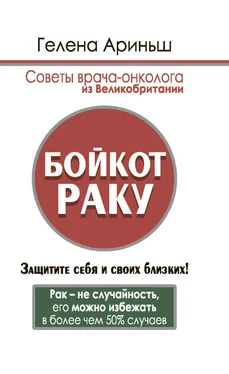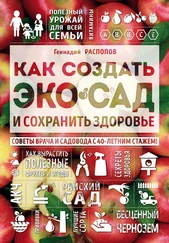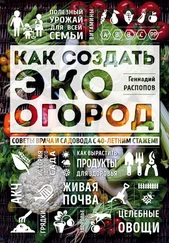230. Erejuwa, O. O.; Sulaiman, S. A.; Ab Wahab, M. S.; Sirajudeen, K.N.; Salleh, S.; Gurtu, S. Honey supplementation in spontaneously hypertensive rats elicits antihypertensive effect via amelioration of renal oxidative stress. Oxid Med Cell Longev 2012; 2012: 374037
231. Kassim, M.; Achoui, M.; Mustafa, M. R.; Mohd, M. A.; Yusoff, K. M. Ellagic acid, phenolic acids, and flavonoids in Malaysian honey extracts demonstrate in vitro anti-inflammatory activity. Nutr Res 2010, 30 (9): 650–659.
232. Erejuwa, O.; Sulaiman, S.; Wahab, M.; Sirajudeen, K.; Salleh, M.; Gurtu, S. Hepatoprotective effect of tualang honey supplementation in streptozotocin-induced diabetic rats. Int J Appl Res Nat Prod 2012, 4, 37–41.
233. Erejuwa, O. O.; Sulaiman, S.A.; Ab Wahab, M. S. Honey – A Novel Antidiabetic Agent. Int J Biol Sci 2012, 8, 913–934.
234. Alvarez-Suarez, J. M.; Giampieri, F.; Battino, M. Honey as a source of dietary antioxidants: Structures, bioavailability and evidence of protective effects against human chronic diseases. Curr Med Chem 2013; 20 (5): 621–638.
235. White, J. W. Composition of honey. Honey: Compr. Surv . 1975, 157–206.
236. Hermosín, I.; Chicón, R.M.; Dolores Cabezudo, M. Free amino acid composition and botanical origin of honey. Food Chem . 2003, 83, 263–268.
237. Sergiel, I.; Pohl, P.; Biesaga, M. Characterisation of honeys according to their content of phenolic compounds using high performance liquid chromatography/tandem mass spectrometry. Food Chem . 2014, 145, 404–408.
238. Chan, C. W.; Deadman, B. J.; Manley-Harris, M.; Wilkins, A. L.; Alber, D. G.; Harry, E. Analysis of the flavonoid component of bioactive New Zealand manuka (Leptospermum scoparium) honey and the isolation, characterisation and synthesis of an unusual pyrrole. Food Chem . 2013, 141, 1772–1781.
239. Candiracci, M.; Piatti, E.; Dominguez-Barragan, M.; Garcia-Antras, D.; Morgado, B.; Ruano, D.; Gutierrez, J.F.; Parrado, J.; Castano, A . Anti-inflammatory activity of a honey flavonoid extract on lipopolysaccharide-activated N13 microglial cells. J. Agric . Food Chem 2012, 60, 12304–12311.
240. Xie, F.; Su, M.; Qiu, W.; Zhang, M.; Guo, Z.; Su, B.; Liu, J.; Li, X.; Zhou, L. Kaempferol promotes apoptosis in human bladder cancer cells by inducing the tumor suppressor, PTEN. Int J Mol Sci 2013, 14, 21215–21226.
241. Jaganathan, S.K. Growth inhibition by caffeic acid, one of the phenolic constituents of honey, in HCT 15 colon cancer cells . Sci World J 2012, 2012: 372345.
242. Samarghandian, S.; Afshari, J.T.; Davoodi, S . Chrysin reduces proliferation and induces apoptosis in the human prostate cancer cell line pc-3. Clinics 2011, 66, 1073–1079.
243. Galluzzo, P.; Martini, C.; Bulzomi, P.; Leone, S.; Bolli, A.; Pallottini, V.; Marino, M. Quercetin-induced apoptotic cascade in cancer cells: Antioxidant versus estrogen receptor alpha-dependent mechanisms. Mol Nutr Food Res 2009, 53, 699–708.
244. Fauzi, A. N.; Norazmi, M. N.; Yaacob, N. S. Tualang honey induces apoptosis and disrupts the mitochondrial membrane potential of human breast and cervical cancer cell lines. Food Chem Toxicol 2011; 49: 871–878.
245. Yaacob, N. S.; Nengsih, A.; Norazmi, M. N. Tualang honey promotes apoptotic cell death induced by tamoxifen in breast cancer cell lines. Evid Based Complement Altern Med 2013, 2013: 989841.
246. Jaganathan, S. K.; Mandal, S. M.; Jana, S. K.; Das, S.; Mandal, M . Studies on the phenolic profiling, anti-oxidant and cytotoxic activity of Indian honey: In vitro evaluation. Nat Prod Res 2010; 24: 1295–1306.
247. Orsolic, N.; Knezevic, A.; Sver, L.; Terzic, S.; Hackenberger, B. K.; Basic, I. Influence of honey bee products on transplantable murine tumours. Vet Comp Oncol 2003; 1:216–226.
248. Jubri, Z.; Narayanan, N. N. N.; Karim, N. A.; Ngah, W. Z. W. Antiproliferative activity and apoptosis induction by gelam honey on liver cancer cell line. Int J Appl Sci Technol 2012; 2: 135–141.
249. Ismail, W. I. W.; Abu, M. N.; Salleh, M. A. M.; Radzman, N. H. M.; Yusof, R. M.; Hassan, H. F. Insulin sensitivity enhancement of the mixture of Tinospora crispa and gelam (Melaleucacajuputi) honey and its antiproliferative activity on hepatocellular carcinoma, HepG2: A preliminary study. J Med Res Dev 2013; 2: 48–54.
250. Chanchao, C. Bioactivity of honey and propolis of Tetragonula Laeviceps in Thailand . In Bioactivity of honey and propolis of Tetragonula Laeviceps in Thailand.; In Pot-Honey. Springer: New York, NY, USA , 2013; pp. 495–505.
251. El-kott, A. F.; Kandeel, A. A.; El-Aziz, S. F. A.; Ribea, H.M. Anti-tumor effects of bee honey on PCNA and P53 expression in the rat hepatocarcinogenesis. Int J Cancer Res 2012; 8: 130–139.
252. Wen, C. T.; Hussein, S. Z.; Abdullah, S.; Karim, N. A.; Makpol, S.; Mohd, Y. A. Gelam and Nenas honeys inhibit proliferation of HT 29 colon cancer cells by inducing DNA damage and apoptosis while suppressing inflammation. Asian Pac J Cancer Prev 2012; 13: 1605–1610.
253. Jaganathan, S.; Mandal, M. Honey constituents and its apoptotic effect in colon cancer cells. Apiprod Apimed Sci 2009; 1: 29–36.
254. Oršolić, N.; Terzić, S.; Šver, L.; Bašić, I. Honey-bee products in prevention and/or therapy of murine transplantable tumours. J. Sci. Food Agric . 2005; 85: 363–370.
255. Orsolic, N.; Basic, I. Honey as a cancer-preventive agent. Period. Biol . 2004; 106: 397–401.
256. Mabrouk, G. M.; Moselhy, S. S.; Zohny, S. F.; Ali, E. M.; Helal, T. E.; Amin, A. A.; Khalifa, A. A. Inhibition of methylnitrosourea (MNU) induced oxidative stress and carcinogenesis by orally administered bee honey and Nigella grains in Sprague Dawely rats. J Exp Clin Cancer Res 2002; 21: 341–346.
257. Tsiapara, A. V.; Jaakkola, M.; Chinou, I.; Graikou, K.; Tolonen, T.; Virtanen, V.; Moutsatsou, P. Bioactivity of Greek honey extracts on breast cancer (MCF-7), prostate cancer (PC-3) and endometrial cancer (Ishikawa) cells: Profile analysis of extracts. Food Chem. 2009; 116: 702–708.
258. Samarghandian, S.; Afshari, J. T.; Davoodi, S . Honey induces apoptosis in renal cell carcinoma. Pharmacogn. Mag . 2011; 7: 46–52.
259. Pichichero, E.; Cicconi, R.; Mattei, M.; Muzi, M. G.; Canini, A. Acacia honey and chrysin reduce proliferation of melanoma cells through alterations in cell cycle progression. Int. J. Oncol . 2010; 37: 973–981.
260. Aliyu, M.; Odunola, O. A.; Farooq, A. D.; Rasheed, H.; Mesaik, A.M.; Choudhary, M.I.; Channa, I.S.; Khan, S. A.; Erukainure, O. L . Molecular mechanism of antiproliferation potential of Acacia honey on NCI-H460 cell line. Nutr. Cancer 2013; 65: 296–304.
261. Ghashm, A. A.; Othman, N. H.; Khattak, M. N.; Ismail, N. M.; Saini, R. Antiproliferative effect of tualang honey on oral squamous cell carcinoma and osteosarcoma cell lines. BMC Complement Altern Med 2010; 10: 49.
262. Morales, P.; Haza, A. I. Antiproliferative and apoptotic effects of spanish honeys. Pharmacogn Mag 2013; 9: 231–237.
Читать дальше
Конец ознакомительного отрывка
Купить книгу












